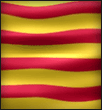Arrels/Raíces/Racines/Roots
Josep tells us of his inspiration and experience in researching and publishing our family history:
I dedicated the book Arrels to Josep Bochaca i Serra, Priest (Tremp 1867- ?), who started writing the family tree of the Boxaca, Botxaca, Bochaca, Buchaca, or Butxaca, which I received from one of his nephews, Antoni Bochaca Moles (la Seu d'Urgell 1907-Barcelona 1984), when I was just 12 years old. Back then my interest in genealogy was born. To these and others, I owe my gratitude and remembrance for having planted in me the seed of this passion.
The name, with origins in Catalonia, remained essentially in the Principate and in some places of the “Països Catalans” (Catalonian country), but later spread to areas of France, to Hispanic countries in America, to the United States of America, and eventually to some populations in Spain.
Why do we always set ourselves up to be the center of the world? For many years, I considered the branch of Gerri de la Sal to be the central trunk and believed it had one sole branch: Gramuntill. However, research began to reveal to me that the actual trunk is that of Freixe, and soon early branches appeared near its base: one of these, Tornafort, would generate the branch of Gerri, and also those of Gramuntill, Taús, Penelles, Vilamur, and, who knows if the one passing through Valencia should have grown in Cuba and in the U.S.A.? Is it purely a coincidence, or is there a connection between the names of three brothers residing in Valencia, sons of Manuel Magín Buchaca Las Casas, and the names of the three brothers in Tornafort (Josep, Francesc, and Manuel)?
When I first contacted Nicolai Buchaca in San Diego (California), in response to his call on the Internet to all Buchacas throughout the world, I entered one of the genealogical branches of the Buchaca variant which in time, and as a result of the extraordinary cooperation between its members, would become an obsession: to clarify the origins of our most distant ancestor.
It would be a pity if we were unable to link the Buchaca family of Valldarques-Sallent to the tree which we agreed to call the main tree on account of its containing earlier figures, all because of one or possibly two missing links in the chain. The founders of this very extensive branch must have come from the tree which had its origins in Freixe. In fact, more than a branch, it constitutes in itself a tree of large dimensions, with many branches and twigs.
The tree which leaves Valencia and is traced to Cuba has been joined to the main tree by hypothesis rather than true documentation. Yes, one or two other rings of the tree are also missing, but if we set aside these two quite developed trees, I must say, regarding the rest, that I was wrong to believe that many people would be left unplaced, and in this case it is a mistake which fills me with satisfaction because with everybody's efforts and especially with the hard work of Pere Cerqueda Buchaca, very few have been left out of this structure.
More than 3000 people bearing our surname figure in our trees, and there are perhaps fewer than fifty whom we could not situate by the time we finalized the book. If we had waited to have everything resolved, this book would not have seen the light of day because there would always remain yet another possibility of increasing our knowledge.
Documentary sources
(Note: Genealogical investigation in Spain is very difficult because in many cases the main source of information, the sacramental books in the churches disappeared during the Spanish Civil War (1936-1939). Meanwhile, the Civil Registration of vital data does not begin to systematically register births, marriages, and deaths in Spain until 1871. This date is of course not useful for seeking information of distant epochs. We were thus forced to more creatively seek out source documents.)
Notarial deeds and other files from Malmercat and Tornafort 1614-1647.
Notarial manuals from Malmercat-Tornafort, Noves de Segre, Organyá, Son, Castellbò.
Sacramental books from:
Alt Urgell: Alàs, Cabó, El Vilar, Coll de Nargó, Gavarra, Montanissell, Sallent, Valldarques, Prats de Carreu, Fígols d'Organyà, Organyà, Castellbò, Parròquia de Tres Ponts, Cortiuda, Pallerols de Rialp, Les Anoves, Móra Condals, Torà de Tost, Castellàs, Noves de Segre, Taús, La Guàrdia, Els Castells, Junyent, Freixe, Espahent, Ars, Arfa, Civís.
Pallars Jussà: Abella de la Conca, Sant Salvador de Toló, Basturs, Isona, Biscarri, Sant Romà d’Abella, Aramunt, Hortoneda, Pessonada, Herbasabina, Talarn.
Pallars Sobirà: Son, Burgo, Baén, Buseu, Useu, Gerri, Farrera, Glorieta, Mallolís, Montenartró, Arcalís, Malmercat, Tornafort, Vilamur, Soriguera.
La Noguera: Menàrguens, Pradell, les Ventoses.
Archives:
- Census documents from the Monastery in Gerri
- Archives of District Protocols of Sort
- Historical Archives of Lleida
- Municipal Archives of Puigcerdà
- Royal Archives of Aragon
- Archives of the Archbishopric of Valencia
- University of Valencia and other centers
- Various sources in Cuba
A limited supply of Arrels remains; email us for purchasing information.

Coat of Arms
If anyone can invent a coat of arms for our lineage with good judgment, who better than ourselves?

Locations
We descend from workers of the land in Freixe, Catalonia. Today, the family is found throughout the world.